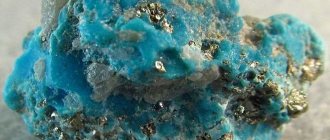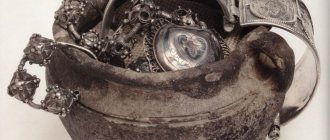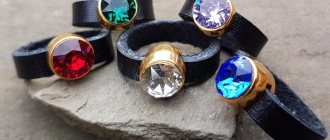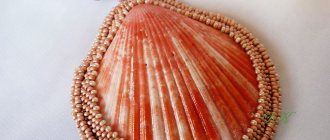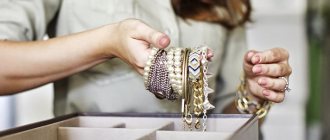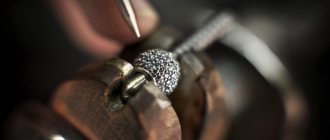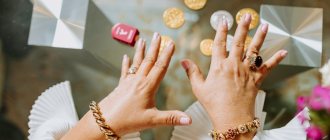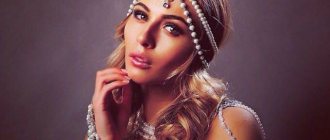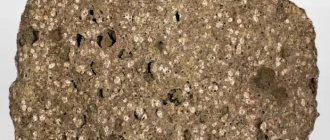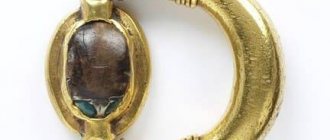Egyptian fashion
Already 3000 BC, the Egyptians dyed their hair with henna and actively decorated it with decorative elements. The hairstyles were quite complex and slave hairdressers, specially trained in this matter, were used to create them.
The Egyptians were an extremely conservative people, and even though the main part of the hairstyle was a wig, it was not distinguished by a variety of forms, this is especially evident in the example of men. Women's hairstyles, over time, began to differ in great variety, which in general is quite natural, but in general they also repeated the traditional Egyptian “trapezoid” shape.
Hairstyle
The entire free population of Egypt wore wigs.
In fact, it was not only and not so much a “decorative” element, but also a kind of “calling card” of the owner, indicating his social status. For example, the pharaoh and his entourage wore the largest wigs. Warriors, farmers, artisans - small, round in shape.
They were made from hair or wool, silk or ropes dyed in dark colors, which were especially “fashionable” at that time, especially during the New Kingdom.
Over time, the hairstyle became more complex. Now the hair began to be braided into numerous braids, arranging them in dense rows, or permed using cold styling: hair strands were wound on wooden sticks and coated with mud, which fell off when dry, and the strands were thus curled in beautiful, light waves or steep curls.
The length of the hair has now dropped to the shoulders.
The length of the hair began to reach the shoulders. The bangs above the forehead were replaced by longitudinal or transverse partings.
On special occasions, long wigs were worn, curled with large parallel curls.
Sometimes the perm was simply replaced by rows of tightly packed braids.
Hairstyles were heavily soaked in aromatic oils, essences and adhesives. All men were required to shave their beards, since a beard (albeit an artificial one, tied to the chin) was one of the symbols of the pharaoh’s power, personifying ownership of the land. It was made in the same way as wigs, but the shape was not so important here.
In addition, the beard was often decorated with a gilded snake - a uraeus, which was also considered a symbol of power.
Priests usually shaved their heads and faces and wore wigs or masks depicting sacred animals, while noble courtiers and landowners wore wigs or cut short haircuts from their own hair. Numerous slaves who inhabited Egypt at that time wore their usual hairstyles, but due to the hot climate, many completely shaved their hair for hygiene purposes.
Women's hairstyles have always been much longer than men's and, of course, much more intricate, especially for queens and noble ladies.
A characteristic feature of all hairstyles was severity and clarity of lines, for which they received the name “geometric”.
Noble women, like men, shaved their heads and wore wigs. The most typical hairstyles on wigs were two: all the hair was parted longitudinally, tightly fitting the face on both sides, and cut evenly at the ends.
The top of the wig was flat. The second hairstyle had the shape of a ball. Both of them were "geometric".
With the development of Egyptian society, women's hairstyles lengthened, a “three-part” wig appeared, three brids of which went down to the chest and back, as well as a huge wig of large curled waves.
The shape of such a wig was unusual, “drop-shaped”.
The hair in it was parted, the waves on both sides were intercepted by flat metal ribbons. At the same time, the ears remained open. The ends of the strands, falling onto the chest, curled into large snail-shaped curls.
Clothing and jewelry of Ancient Egypt
The strand of hair falling down the back was flat and consisted of straight hair or small braids.
The wigs were dyed in different colors - blue, orange, yellow.
Hairstyles were also made from one’s own hair, loosely spread down the back, and the ends were decorated with tassels. Sometimes the hair was curled in small waves - this curl was obtained after combing small, thin braids.
Children, boys and girls shaved their hair, leaving one or several strands on the left temple, which were curled into a curl or braided into a flat braid.
The ends of the hair were tied with a hairpin or colored ribbon.
False braids made of colored silk threads, ribbons or strips of leather, and animal hair were used.
Hats
The simplest of them were laces made of leather and silk threads - the Egyptians wore them as forehead bands. Hoops made of metal or fabric are also widely represented, which were worn over the hairstyle both on wigs and on one’s own hair.
On special occasions, pharaohs wore special headdresses made of precious metals.
They fit tightly around the head, covering the hair, but left the ears open. The oldest of them is the pschent - a crown shaped like a bottle inserted into a ring. Pharaohs began to wear such a double red-and-white crown after the unification of Lower and Upper Egypt into one centralized state.
Usually pschent was worn on thin linen or linen scarves or caps.
Other ceremonial headdresses were atef - a reed crown, as well as a double crown, decorated with images of a kite and a cobra. A type of ceremonial headdress was a diadem made of gold or silver - seshnem.
All classes wore a headscarf—klaft—that fit tightly around the head and left the ears open; two ends fell on the chest, the third on the back, sometimes this end was intercepted with a ribbon or hoop. A type of klaft was a striped scarf - no less.
Headdresses were decorated with images of birds, animals and hieroglyphs that were of a decorative nature.
Floral ornaments were often used. Lotus petals and leaves filled with colored paste were used to decorate headbands, tiaras, and ribbons.
The symbol of the unlimited power and divine origin of the pharaoh was the image of a small snake, which was called the ureus, or ureus.
It was made of gold, colored enamels, and was fixed above the forehead or at the temple on the wig, headdress or beard of the pharaoh.
Sometimes crowns were decorated with not one, but two snake heads. The warriors wore helmets in the form of felt hats; clergymen wear hats with heavy animal masks attached to them.
Women rarely wore headdresses, with the exception of queens. In paintings, the wives of pharaohs are often depicted wearing a headdress in the form of a hawk outstretched, made of gold, precious stones and enamels.
There were headdresses of other forms, for example, like the one depicted on the head of Queen Nefertiti.
Ladies of the upper class wore wreaths, flowers, tiaras, ribbons, gold chains with temple pendants made of glass, resins, and precious stones.
Discovered in the tomb of the 18th dynasty pharaoh Tutankhamun, the golden diadem is inlaid with opal, carnelian, and a gold ball is placed in the center.
A round disk and lotus flowers are located at the place where the ribbons are attached, inlaid with malachite, corals, and glass.
The lotus motif is very popular in the headdresses of the 18th dynasty. The headbands and hoops of not only noble women, but also musicians and slaves are decorated with lotus flowers. The lower strata of the population wore cloth scarves, reed, leather, and straw hats and caps.
Decorations
In Ancient Egypt they were worn by all segments of the population. These were rings, earrings, bracelets.
The Egyptians loved turquoise tones and therefore the most elaborate jewelry was made of lapis lazuli, which was highly valued.
A number of different decorations were associated with the religious ideas of the Egyptians. Amulets were supposed to ward off evil spirits and protect against dangers. They usually took the form of an eye, a heart, a snake's head, or a scarab beetle. Headdresses were decorated with images of birds, dragonflies, and frogs, set in gold, silver, and platinum.
The abundance and relatively easy extraction of gold made it one of the common metals known to the Egyptians since ancient times.
Iron also served as a material for jewelers and was much more expensive than gold. Hairpins and combs for hairstyles were made from iron. Many combs themselves were works of art, especially those made of ivory: inlaid with colored enamels, precious stones, they were completed with the image of figurines of animals, birds - ostriches, giraffes, horses.
Cosmetics
Cosmetics were widely used in Ancient Egypt.
In the pyramids and tombs of the pharaohs, toilet boxes with a full set of bottles, jars, plates, toilet spoons, and pots were kept. All the women whitened themselves, blushed, and used phosphorescent paints. The passion for cosmetics was so great that even sculptural portraits, mummies of cats and sacred bulls were painted!
Women inked their eyebrows and eyelashes with a special Kokhol powder and drew green circles around their eyes with malachite.
Finely ground lead sulphide was used to tint the eyelids. Noble ladies used cosmetics infused with herbs; Many cosmetics were not only decorative, but also had medicinal properties. For example, eyelid kohl was used as an insect repellent. Malachite green served as a cure for eye diseases. The Egyptian queen Cleopatra even wrote a book on cosmetics, “On Medicines for the Face.”
The Egyptians knew products for caring for the skin of the face and body, which were prepared according to special recipes.
Noble ladies loved to use vegetable oils with the addition of water lily and lotus juice for rubbing. Ointments were used to nourish the skin and protect it from the scorching rays of the sun. They included olive, castor, sunflower, almond, and sesame oils. Sheep and ox fat and amber were added.
Scented towers were attached to the wigs.
Cleopatra had a whole factory for the production of perfumes. During excavations, archaeologists discovered the remains of buildings in the Dead Sea area.
This place was the property of the queen; it was given to Cleopatra by the Roman commander Antony. Among the utensils were found cauldrons, pots for evaporation and boiling, hand millstones for grinding herbs and roots. Toilet procedures were performed by slaves, each with her own specialty.
In the Egyptian medical works that have come down to us in the so-called Ebers papyrus, published in Leipzig, the Hearst papyrus and others, in addition to information on anatomy, they also contain some recipes for the manufacture of cosmetics.
Egyptian recipes are mentioned by Hippocrates, and they were also included in European folk medicine. These are, first of all, recipes for ointments that were prepared in temples. For example, to prevent graying they used the fat of black snakes, the blood of black bulls and the eggs of magpies and crows.
Hairdressers claimed that ointments made from lion fat had miraculous powers and promoted hair thickness and growth.
Ointments containing fish oil and donkey hoof powder were prized. These products were exported and sold for a lot of money.
Middle Kingdom (XXI-XIX centuries BC)
The soil, which was prepared by the artisans of the pre-dynastic and ancient kingdoms, reached its greatest flowering in the next period of the middle kingdom, when jewelers developed and improved the techniques of inlay, casting, and filigree. Archaeologists have discovered a lot of jewelry, including: breast ornaments, tiaras, rings, bracelets and, of course, pectorals.
Circlet of Sit-Hathor
The Sit-Hathor diadem is a striking example of jewelry art from the Middle Kingdom period. The golden tiara is about 44 cm high, made of a hoop-shaped plate, decorated with 15 decorative rosettes. Decorative rosettes are made using cloisonne enamel technique and inlaid with carnelian. The tiara is also decorated with the Uraeus, a symbol of royalty, and golden feathers, symbols of the goddess Isis. The tiara is complemented by symmetrically located stripes of thin gold falling on the sides. In addition to carnelian, the tiara is decorated with lapis lazuli and green faience. According to the compositional structure of the tiara, a period of change can be traced from the statics that dominated previous periods to individuality, diversity and dynamism of jewelry.
Princess Khnumit's jewelry
The jewelry found in the tomb at Dashkhur, including the jewelry of Princess Khnumit, dates back to the Middle Kingdom period. A large number of decorations were found in the tomb, including an unusual diadem. Despite the fact that the tiara is made using the traditional cloisonne enamel technique, its shape is very unconventional. The hoop is made of solid rigid elements in which rosettes are connected to bell-shaped flowers. The rosettes are connected to a tree-shaped centerpiece made of a thin gold tube with movable elements and decorative flowers. In addition to earthenware paste, the diadem is inlaid with semi-precious stones: carnelian, turquoise and lapis lazuli.
A lot of jewelry was found in Khnumit's burial burial, including necklaces made of gold beads and semi-precious stones. At the ends of the neck ornaments there were hawks as symbols of the heavenly deity, as well as the soul and heart. One of the wide necklaces consists of two rows of beads, between which are rows of amulets skillfully inlaid with colored enamel and semi-precious stones, including pendants representing symbols of life, stability, protection and indestructibility.
Speaking about the jewelry art of the Middle Kingdom, it must be emphasized that this level was achieved by the increasing role of the urban population, during which local craft centers developed at an accelerated pace. Religious changes contributed to emancipation and the emergence of relative freedom in decorative design. And the increased aggressive campaigns resulted in a steady influx of gold, semi-precious stones and valuable wood.
Popular articles 8 ideas on how to make a dream catcher with your own hands (photo)
Clothing and jewelry of Ancient Egypt
In the history of Ancient Egypt, the most common type of clothing was draped. Later an invoice, but never a swing one.
All drapery was usually shaped from back to front and placed in front in clear, rhythmic shapes, while the back remained tight-fitting.
The main clothing for men was a loincloth of varying lengths and draped in different ways.
It was called skhiti, and was held at the waist by a belt - a thin strap with lowered ends, luxuriously decorated, tied in front in the center of the waist. Together with a loincloth, and sometimes without it, the Egyptians wore a narrow triangular apron of varying lengths and widths. The most common shape of the apron was its widened towards the bottom or oval shape.
Women's clothing consisted of a piece of cloth that wrapped around the figure from the ankles to the chest and was supported by one or two straps.
This clothing was called kalazuris and was the same in shape for everyone. Class differences in clothing were expressed in the quality of the fabric.
The image shows a man wearing a woman wearing kalazuris.
A surviving fragment on which you can see clothes (skhiti and kalazuris)
In the era of the Middle Kingdom, it was customary to wear several clothes, which greatly changes the silhouette and increases its volume.
At the forefront - in all likelihood, this was the criterion of perfection for the ancient Egyptian - is the shape of the pyramid. To give this shape to a woman's dress, the skirt is pleated.
Pleated clothing is becoming fashionable and is worn by both men and women.
As in the Old Kingdom, women love jewelry and wear beads—mostly blue or green—and bracelets on their arms and legs.
In a men's suit, a detail appears that covers the upper part of the body, something between a vest and a draped garment that goes from the waist to the chest.
During the period of the Ancient and Middle Kingdoms, the loincloths of the pharaohs and military leaders were tied so that the front folds form the shape of the same pyramid. Both men and women in Ancient Egypt wore a wide collar-necklace – uskh – that covered the shoulders and part of the chest.
For civil servants, the ukkh is divided into stripes of different colors, depending on the position held and occupation.
Trendy models
Ka bracelets, symbolizing the vital nature of man, are still in fashion. Such accessories depict a lotus flower and are inlaid with onyx, turquoise or lapis lazuli.
The scarab is always at the peak of fashion. Egyptian jewelry with this symbol comes in a wide variety. There are rings, pendants, bracelets, and earrings. The choice is simply huge, so lovers of this theme are provided with a wide range of accessories for various outfits.
Modern trendy models are made mainly of gold or silver. But there’s a problem with gold – when making masters, they often use a low-grade noble metal with foreign impurities
Therefore, when choosing an original gift for yourself or your loved ones, pay attention to samples with a higher value
Silver, although less common, is nevertheless very popular among tourists.
Since ancient times, the inhabitants of Egypt made products from malachite: this stone was inserted entirely or used to obtain powder for painting.
The Neolithic era introduced the use of a new material into the Egyptian “marafet” - turquoise. Bracelets, beads and scarabs were made from it.
Before purchasing authentic Egyptian jewelry, you should consult a professional jeweler. Expert advice will help you better navigate the choice of products. This way you can insure yourself against counterfeits in absentia.
Ancient Egypt costume
The stripes on the heads of the courtiers are yellow, those of the military are red, and those of the temple servants are blue. Sometimes Egyptians - both women and men - wear a headscarf - a claft - on their heads to protect them from the sun. The claft is made of colorful striped material, in front, at the temples, with ties attached to it that go down to the shoulders.
Yellow and blue klafts could only be worn by members of the pharaoh's family.
| Uskkh of Queen Nefertiti | Yellow-blue claft |
The priests dressed in the same way as the nobles, however, since they occupied different levels in the priestly hierarchy, their clothes differed depending on this “table of ranks.”
The high priests wore, in addition to the skhenti, a cape sewn from several pieces of fabric and a leopard skin on their shoulders. The younger ones, instead of a skhenti - a loincloth - wore a bell-shaped skirt with a frame. Each priest was required to have a uskh and a klaft of the same color, corresponding to his position.
Very strict hygiene rules were established for priests in Ancient Egypt.
The priest had to wash himself several times a day and shave off all the hair on his head and body, since it was believed that they were given to man by the forces of evil. He could only wear freshly washed clothes and had no right to wear things made of wool or leather - they were considered unclean, except for the leopard skin cape that he tied around his shoulders.
At this time, noble Egyptian women wore a cape over a pleated kalasiris, draped in a complex manner.
One end passes under the left shoulder, the other is passed under the right armpit, the longer right part is thrown at the lower end over the left shoulder.
The end passes diagonally across the back under the right armpit and is tied to the upper end of the left side of the cape. The free part of the cape on the left shoulder was laid at the discretion of the hostess, so similar capes were draped in a variety of ways.
In both men's and women's costumes during the New Kingdom, a wide translucent robe, white with red stripes, resembling a shirt, appears.
From above it was adjacent to the body, from below it expanded, diverging into folds. This shirt was worn on top of all clothing. The fabric from which she was sewn was so thin that the entire undergarment, jewelry, richly decorated belt and dark body were visible through it.
Pharaonic clothing options
Decorations
Egypt was famous for its high level of craftsmanship, processing of precious metals and stones. In the Ancient Kingdom, colored pastes were invented to coat beads or make them from colored smalts.
Beads were used to make a traditional sun necklace - uskh, bracelets, etc. Women's wigs were strengthened with headbands-crowns made of small metal plates.
Ceramic vessels with fragrant oils were placed on the crown of the head for festivities, supported by ribbons, or strengthened by a lotus flower or feathers.
The Egyptians loved to wear gold or beaded bracelets on their shoulders and wrists, and women also wore them on their legs. Both men and women wore rings on their fingers. Many people wore amulets and scarabs.
Ancient Egypt Jewelry
It is customary to decorate clothing with gold plates, beads, or, if it is made of fabric, embroidered with gold patterns.
In general, a lot of jewelry was worn in the era of the New Kingdom, these were beads and necklaces, to which pendants with images of gods or portrait, carefully painted miniatures were hung on gold threads.
Ancient Egyptian Necklace
Both men and women now wear bracelets on their arms and legs, and earrings are also worn; They wear gold jewelry in their hair and decorate their fingers with rings and rings.
At the waist, clothes are tied with expensive belts made of gold plates.
Fashion status
Jewelry with an Egyptian past is classified as vintage style. If they were once considered a privilege of high society, today anyone can purchase them.
The massiveness of Egyptian jewelry is explained by the fact that a person’s belonging to a noble class obliged him to wear large distinctive signs, that is, jewelry made of precious metals and stones.
Fashionistas of our time skillfully combine wide bracelets with necklaces or long earrings. The main thing here is not to overdo it. Large products themselves should not “overshadow” the appearance of the girl herself. Flashy jewelry in abundance only disrupts the harmony of the outfit.
Egyptian pendants are considered the most delicate and unobtrusive choice; they help create the most delicate image, as they are small in size and can very eloquently reflect the spirit of the era. Handicraft stores are ready to provide a wide range of items for making such items with your own hands.
Connoisseurs of everything mystical will like jewelry from ancient times. For example, Egyptian totems protect against evil spirits, wild animals and people with bad intentions. The circle of the sun, the uraeus snake, the scarab beetle, the ibis, and the falcon are still considered protectors of modern man today.
Ancient Egyptian Jewelry: Jewelry, Clothing and Headdresses
We learn about how the ancient Egyptians lived, what they believed, and what kind of clothes they wore by examining and studying the reliefs and paintings that have come down to us on the walls of the pyramids, temples, and sarcophagi of Ancient Egypt.
Egyptian clothing has remained unchanged for many centuries. In principle, we are talking about only two types of clothing: men's and women's. Only its decoration means the difference between individual social classes.
But here, too, precise laws apply. Men during the Ancient and Middle Kingdoms wore a simple loincloth, skhenti, and the torso was free of clothing.
The pharaoh's shenti was made of thin, well-bleached linen or cotton; The artisan's hips were covered with a rough and rather thick canvas of natural color.
And it was from this simple bandage, which served as an “apron” (it was also work clothes), that the clothes “designated” for the powers that be – kings, gods and their retinue – began to be formed. Their hip cover is softly folded, decorated with colored belts, and its front part expands downward in the form of a triangle decorated with geometric patterns.
In painting and sculpture there is a beautiful contrast between the white loincloth and the brown-red color of the male body. The skin color for the depiction of male figures was precisely established.
Unlike men, women and slaves had skin of a different specific color - yellow.
The women's costume was distinguished by its extreme simplicity: a straight, ankle-length kalasiris shirt, “tailored to measure,” with one or two straps, leaving the chest open. Sometimes they sewed a one-piece shirt with a deep neckline on the chest.
Egyptian women did not wear clothes at home, but decorated themselves with necklaces and bracelets. The hips were decorated with the thinnest chains.
All Egyptians carefully shaved their hair and covered their heads with a wig made of plant fibers or sheep's wool to protect them from the hot rays of the sun.
By the way, the right to wear shoes - simple sandals made of palm leaves, papyrus, and then leather - belonged only to the pharaoh, and less often to his entourage. The signs of the pharaoh's royal dignity were a gold tied beard, a crown and a staff.
Egyptian women actively used cosmetics: they painted their eyebrows and eyelashes with black paint, painted wide green circles under their eyes, and painted their arms and legs with orange paint. The traditional decoration was uskh - a collar-necklace made of gold plates, precious stones, and pearls.
Graceful Egyptian clothing is complemented by jewelry.
The Egyptians knew coining and engraving, they knew how to handle precious stones and their substitutes. It was in Egypt that all types of jewelry made from precious stones (rings, brooches, earrings, bracelets, tiaras) arose.
